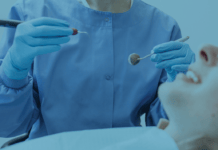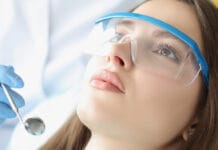A year ago, I began the Botox journey with my ridiculously overachieving masseters! Unwilling to wear a nightguard and clenching by day as well as during the night, I knew I needed some sort of untraditional relief. Anti-inflammatories, warm moist heat massage, and mindfulness were solutions without results, and my jaw muscles buffed up in a way I wished my abs would!
In August 2018, my doctor and I took part in a Botox-dermal filler course, which included TMJ and pain therapy. As part of the course, live models were required for practicing techniques, and my giant masseters were screaming for treatment. Placement is determined by tapping the teeth together lightly, squeezing to feel where the muscle is the most active, and then aiming to reduce that.
My first placement of Botox in August 2018 provided excellent results. I wrote in the Today’s RDH Nov. 4, 2018, article, “Seven days after injection of 20 units in each masseter and five units in the medial pterygoid, I began to feel a tingle in the muscle. At 13 days, my face was noticeably smoother, and I went through the night without clenching. By day, I could tell I was no longer clenching, and my teeth were apart at rest. At 17 days, I had more tingling in the muscle, but no headaches in the morning, and minimal clenching at night. By day, I was completely aware of any time I tried to clench.
“Interesting to note, my masseter muscles fatigue easier; if I eat chewy, crusty bread, I can feel it requires more effort. To date, this has not been enough to be a diet aid, but I imagine for meat-eaters, a large steak would require quite an effort to get through! While I do have some mild moments of night clenching, still after 5 ½ weeks, it immediately wakes me, and I can change sleep position then return to sleep, waking well-rested.”
On Dec. 7, 2018, the clenching returned in a way that would again disturb my sleep and made me hyper-aware when my teeth were together. No pain or headaches, but simply an awareness that it would be easy to return to a terrible clenching/grinding habit. We determined after doing the tap, tap, clench palpation testing that the area of activation was now slightly different in placement and much less severe, as it was being caught early on.
For the second round of injections, the Botox was placed more anteriorly in the masseter muscle, and the units were decreased to 15, 15, 5, 5 knowing that more can always be added as needed at a later date. This amount gave complete relief in just five days this time as opposed to the original 17 days previously for full effect.
Seven months later, the clenching began again, mostly at night, and would wake me from a sound sleep. By day, I was very aware of keeping my teeth slightly apart, and my tongue placed directly lingual of #8 and 9. Hoping to overcome the habit, nontraditional pillows, warm moist heat with daily self-massage, and anti-inflammatories were again used.
At eight months the battle was real, and Botox was again injected directly into the masseters. The tap, tap, clench test revealed a much smaller area on the masseter (but very prominent), and again 15, 15, 5, 5 units of Botox were placed. At just two days post-injection, the muscle felt slightly different, and at three days the masseter muscle is significantly softer, and my teeth are comfortably at rest apart.
The course had stated that most patients will go longer between treatments and may need fewer units at each treatment. For me, this has been the case, and I am intrigued to see if I am able to completely retrain the muscles and outgrow the habit at some point.
Now two weeks out, I still have moments when I can feel the Botox tingle and know that it is still becoming even more reactive and more effective. The muscles are smooth, and I am completely comfortable and not clenching. It will be intriguing to see how long the effects last, but I do know as a patient who cannot tolerate a night guard, this has been a total lifesaver! Our patients deserve to know all the options. For many, Botox offers excellent results whether at a dental office or medical setting.











